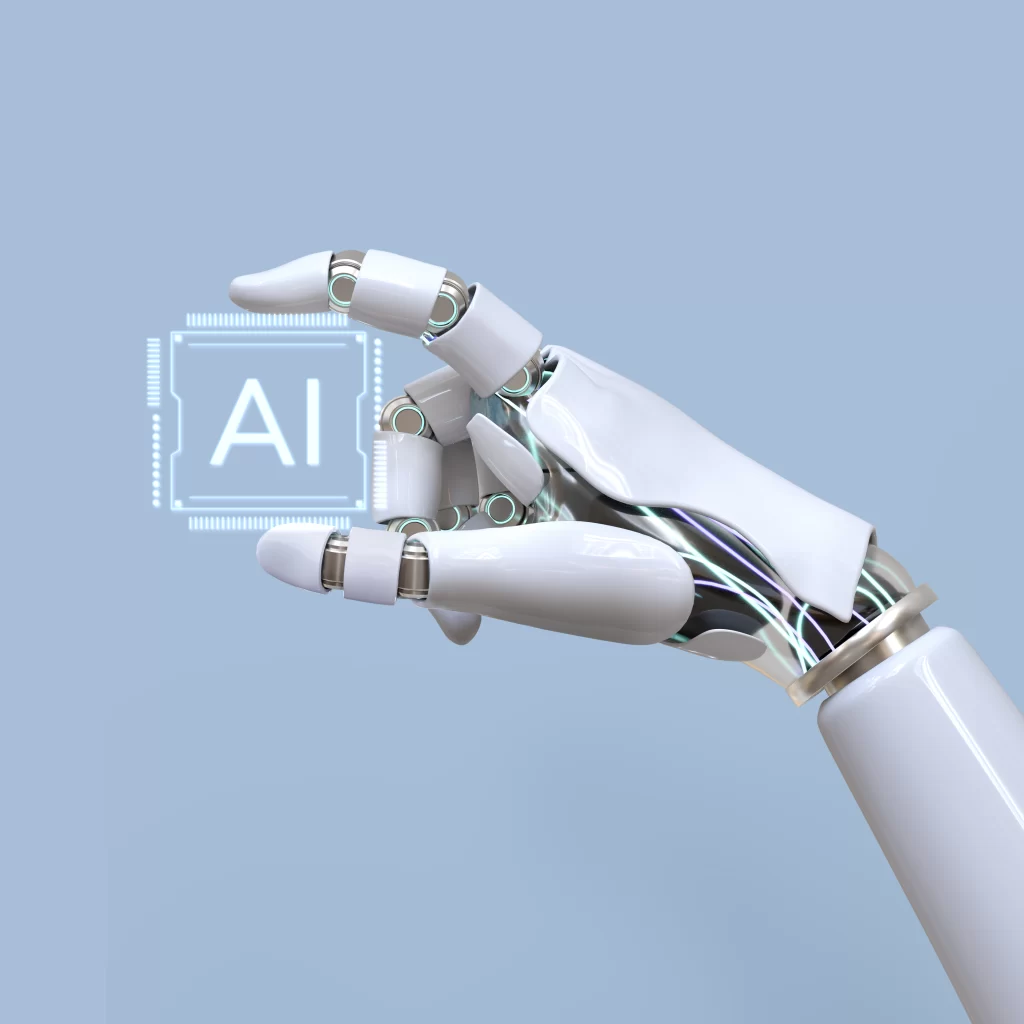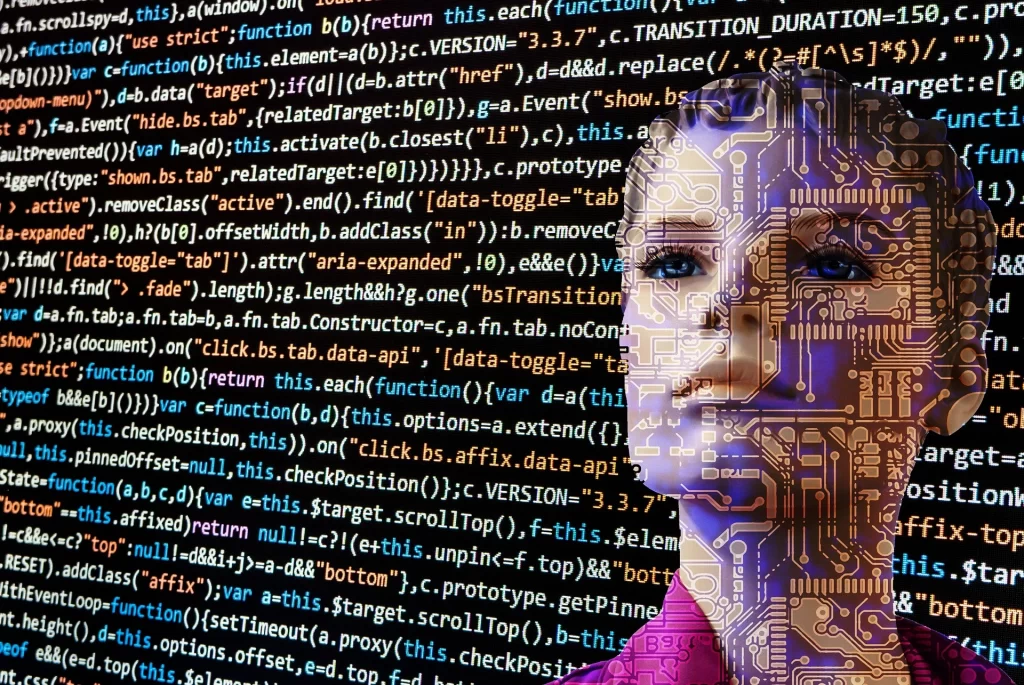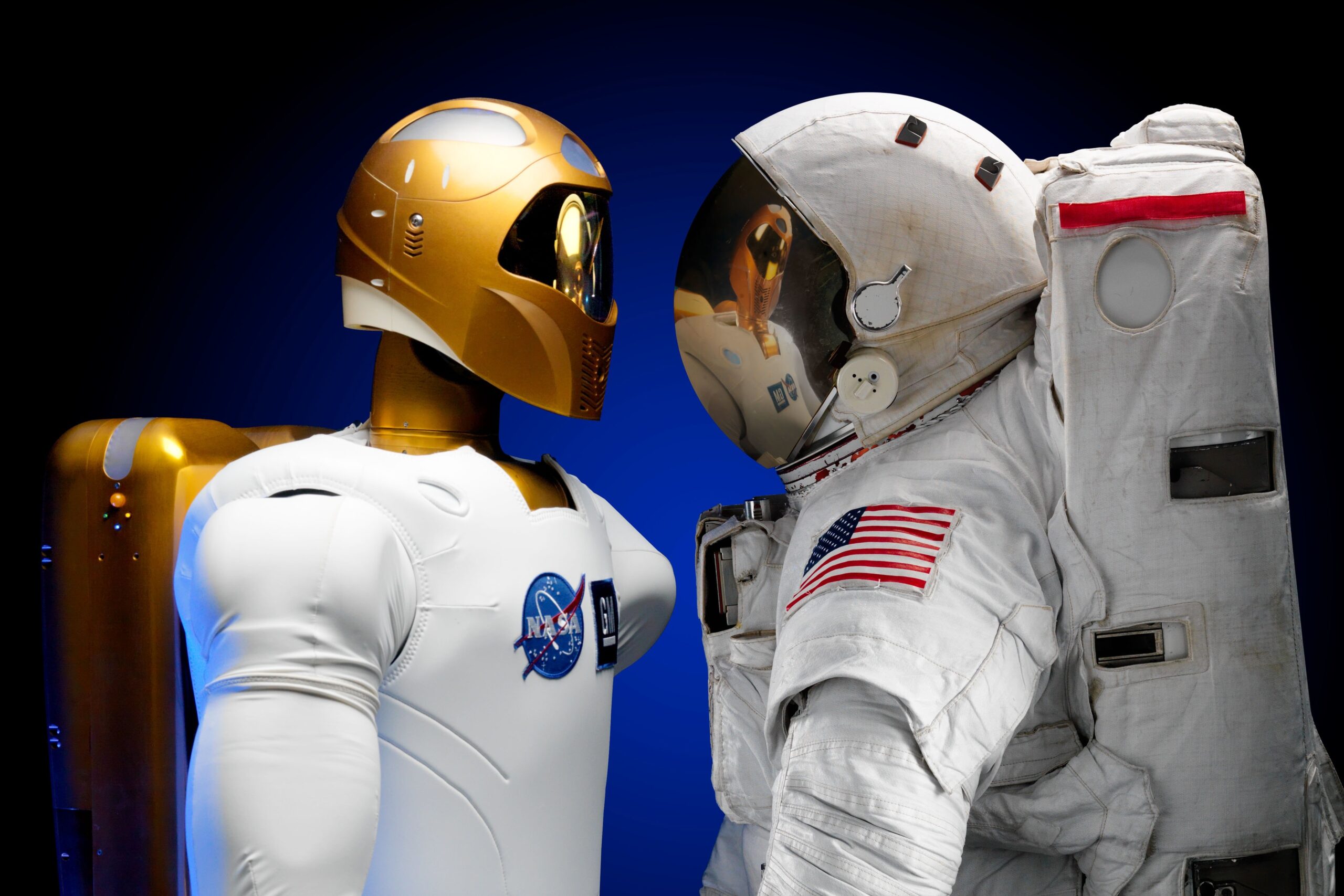Is Artificial Intelligence is the Next Level of Digital Transformation
Well, when we talk about Artificial intelligence or AI so it is the imitation of human intelligence processes by machines, especially computer systems. The applications of Artificial Intelligence consist of natural language processing, expert systems, speech recognition, and machine vision.
History of artificial intelligence: Key dates and Names
AI is not a new technology or a new word for researchers. This technology is very much older than we could even think. Below given are a few milestones in the history of AI that describes the journey of the AI generation to till date:
The year 1950
Computing Machinery & Intelligence published by Alan Turing. In the paper, Turing—presents to answer the question ‘can machines think?’ and introduced the Turing Test which was done to analyze if a computer can determine the same intelligence as a human. The value of the test done by Turing has been debated ever since.
The year 1956
At the first-ever conference of AI at Dartmouth College, John McCarthy defines the term ‘artificial intelligence’. In that year, Allen Newell, Herbert Simon, and J.C. Shaw created the Logic Theorist, the first-ever running software program of AI.
The year 1967
Frank Rosenblatt builds the first computer based on a neural network which is Mark 1 Perceptron that was learned through trial & error. Just a year later, Seymour Papert & Marvin Minsky published a book named Perceptrons, which becomes the landmark work on neural networks.
The year 1997
Later on, IBM’s Deep Blue beats world chess champion, Garry Kasparov, in a chess match.
The year 2011
IBM Watson beats champions, Brad Rutter & Ken Jennings, at Jeopardy!
The year 2015
Minwa Supercomputer of Baidu uses a special type of deep neural network known as a convolutional neural network to categorize & identify the images with a higher rate of accuracy than an average human.
The year 2016
Lee Sodol, the world champion Go player beats Deep Mind’s Alpha Go program which was powered by a deep neural network, in a five-game match. The success notably gave a huge number of possible moves as the game progresses. Later on, Google purchased Deep Mind for a reported 400 million USD.
How does Artificial Intelligence work?

As the popularity of AI has expanded, suppliers around the world have started moving to elevate how their products & services use Artificial Intelligence. AI needs a foundation of specialized software & hardware for training & writing machine learning algorithms. The few popular synonymous with AI consists of Python, R, and Java.
In general, AI work by taking large amounts of training data, analyzing the data for patterns & correlations, and then using the patterns to forecast about future.
Why is artificial intelligence important?
Artificial Intelligence brings intelligence to existing products as most of the products that we’ve used already will be improved with AI capabilities, for example, Siri was added as an amazing attribute to the new generation of Apple products. Automation, smart machines, and conversational platforms can be joined with a huge number of data to enhance various technologies. Various upgrades were added in the workplace & at home which range from smart cameras & security intelligence to investment analysis.
Artificial Intelligence brings learning & discovery via data. AI performs high-volume, computerized tasks frequently instead of automating manual tasks. And AI performs all this so amazing and even without fatigue.
Also read: African labourers were used to train OpenAI’s ChatGPT AI Model
Artificial Intelligence dynamically adapts via progressive learning algorithms so that the data can do all the programming. AI does so by finding regularities & structure in data so that algorithms can develop various skills.
Artificial Intelligence gets the most out of the data. When algorithms are self-learning, the data itself becomes an asset & the answer comes in the data only. What you just have to apply is AI to search them. Nowadays since the role of data is more significant than ever, it can create a huge competitive benefit. In this competitive era, if you’re having the best data then even if everyone is using similar techniques, the best data will only win.
Also read: 5 Best Laptops Under 30000 RS
Artificial Intelligence analyzes more and deeper data by using neural networks that have many hidden layers. Constructing a fraud detection system with five hidden layers once used to be very impossible & today all this has been changed with magnificent computer power.
Artificial Intelligence attains magnificent accuracy through deep neural networks. For instance, your interactions with Google & Alexa are all based on deep learning. And such products get more accurate the more we use them. In the medical field, AI techniques from object recognition & deep learning can now be used to identify cancer on medical images with enhanced accuracy.
Learning processes of AI
This characteristic of AI programming aims at obtaining data & establishing rules for how we can turn the data into actionable information. The rules, which are known as algorithms, need computing devices with step-by-step instructions for how to get a specific task done.
Artificial Intelligence programming aims at three skills that are learning, reasoning, and self-correction.
Machine learning vs. Deep learning

Well, machine learning & deep learning both are sub-fields of AI, and deep learning is actually a sub-field of machine learning.
Deep learning actually consists of neural networks. “Deep” in the term of deep learning means a neural network that consists of more than three layers—which would include the inputs & the output can be known as a deep learning algorithm.
The way in which machine learning & deep learning varies is in how each algorithm learns. Deep learning automates much of the feature extraction piece of the process by removing some of the manual human intervention needed & by enabling the use of larger sets of data.
Also read: 5 Best 5G Smart Phones Under 20000 RS
You can define deep learning as “scalable machine learning” as noted by Lex Fridman. Non-deep or classical, machine learning is more based on human intervention to learn. The experts figured out the hierarchy of characteristics to understand the differences b/w data inputs, which mainly need structured data to learn.
“Deep” machine learning can sway labeled datasets that are also defined as supervised learning, to inform its algorithm, but it doesn’t necessarily need a labeled dataset. It can consume unstructured data in its raw manner just like text or images, and it can determine the hierarchy of attributes automatically which distinguishes various categories of data from one another. Unlike machine learning, it doesn’t need human intervention to grasp the data allowing us to scale machine learning in a more interesting manner.
Applications of Artificial intelligence
There are various applications of AI systems today. Below given are some of the very common examples:
Speech recognition
It is also called as ASR i.e., automatic speech recognition, speech-to-text , or computer speech recognition, and it’s a capability that uses natural language processing to turn human speech into a written format. Various mobile systems contain the feature of speech recognition in their handsets for voice search for e.g. Siri which provides more ease around texting.
Recommendation engines
By using past behavior data of consumption, Artificial Intelligence algorithms can help to check the data trends that can be used to develop more efficient selling strategies. These are used to make relevant add-on recommendations to users during the checkout section for online businesses.
Computer vision
This technology enables the systems to understand meaningful data from digital videos, images, and other visual inputs, and on the basis of those inputs, it can take action. This ability to serve recommendations varies it from image recognition tasks. All systems are now having applications with radiology imaging in healthcare, photo tagging in social media, and self-driving cars within the automotive industry which are powered by convolution neural networks.
Customer service
These days, human agents are getting replaced by online virtual agents along the customer journey. They answer the FAQs i.e., frequently asked questions on topics, like cross-selling products or suggesting sizes for customers, shipping, and providing personalized advice, changing the way we think about the engagement of customers across social media platforms & websites. A few examples include messaging sections on e-commerce portals with virtual agents, messaging apps, such as Facebook, and others tasks mainly done by voice & virtual assistants.
Automated stock trading
AI is even helping in optimizing stock portfolios, as they have high-frequency trading platforms that make lakhs or even more of the trades per day without any human intervention.
What is Artificial Intelligence: Advantages and Disadvantages of AI
Artificial intelligence just like any other idea or concept does have has its pros & cons. Below given are a few of the pros and cons of AI.
Pros:
It works smoothly & reduces human error
It never sleeps or gets tired, so it is available 24×7
It never gets bored of any task, so it handles repetitive tasks easily
It is very fast.
Cons:
It is very costly to implement
It can’t do duplicity of the human mind or creativity
It can replace some jobs which might lead to unemployment
People can become very dependent on it.
Future of Artificial Intelligence
Today, artificial Intelligence has attained a turning point & is poised to transform every area. Most of them have been already written about specific applications of Artificial Intelligence. Here, we will consider how AI is poised to reframe the broader areas of our society & economy over the next decade with a few predictions which are as follows:
Artificial Intelligence will transform the scientific method
With AI & ML, we can anticipate to see orders of the significance of enhancements in what can be achieved. There is a certain set of ideas that humans can explore with computers or systems.
There is a larger set of ideas that humans can address with computers. And there is a much larger set of ideas that humans having computers, along with AI can tackle without any obstacle.
Artificial Intelligence allows a novel ability to analyze massive data sets & discovering complex patterns & relationships computationally.
Also read: PS5 Pro is launching in April 2023: All Details
AI, expanding human intelligence, is primed to convert the scientific research process, releasing a new golden age of scientific discovery in the upcoming age.
Important science works on constructing or large-scale clinical trials which are time-consuming & costly. In recent years there has been significant concern about scientific progress slowing down & the scientists may not be experiencing the golden age of discovery any longer.
Artificial Intelligence will become a support system of foreign policy
In coming years, we’re likely to see huge government investment in Artificial Intelligence. Lloyd J. Austin III, U.S. Secretary of Defense has embraced the significance of partnering with amazing AI technology companies to strengthen & maintain the competitiveness of the U.S. on a global level.
The National Security Commission on AI has created detailed recommendations, ending that the U.S. government needs to accelerate AI innovation greatly.
Artificial Intelligence will allow next generation consumer experiences
Next-generation experiences of the consumers such as the crypto currencies have gathered a huge trend these days. These experiences will be critically empowered by AI.
The metaverse is essentially a problem of AI as humans have lacked in the sort of insight that is required to understand the human actions and their similar effects in a metaverse setting.
Most of the part of our life takes place at the corner of the world of atoms & world of bits. The algorithms of AI have the potential to learn a way faster in a digital world.
Also read: Best Headphones Under 5000 RS, Wired & Bluetooth Headphones
These are natural catalysts for AI to bridge the feedback loops b/w the physical & digital realms. For example, crypto currency, block chain, and distributed finance, they are all about incorporating frictionless capitalism into the economy.
But to make this vision real, distributed applications & smart contracts will need a deeper understanding of how capital activities interact with the real world, which is a ML & AI problem.
Addressing the climate crisis will require Artificial Intelligence
Various promising emerging ideas require AI to be feasible. A new potential approach contains prediction markets powered by Artificial Intelligence that can tie policy to impact, taking a holistic view of interdependence & information about the environment.
This would likely be powered by digital “twin Earth” simulations that would need an incredible number of real-time data & computation to check nuanced trends imperceptible to human senses.
Artificial Intelligence will enable growth in medical fields
Embodied medicine has been an aspiration today as a compelling emerging application of AI contains synthesizing individualized patient therapies.
Furthermore, AI has the power to integrate in a single day & predict the personalized manner of treatment in near real-time where no clinical trials are required.
In simple terms we would say that AI is suited differently to construct & asses “digital twin” rubrics of individual biology and is able to do so in the way of the communities where a person lives in.
The human body is very astonishing in its complexity. Without AI, it’s nearly impossible to make sense of the gigantic datasets from an individual’s physiology, let alone the effects on individual health outcomes from lifestyle, environment, and diet.
AI solutions have the potential not only to enhance the state of the art in the medical field but also to play a huge role in minimizing constant health inequities.
Final Thoughts on AI
The applications of AI are likely to impact critical facets of our society & economy over the coming years. We’re just in the early innings of what a lot of credible experts view as the brightest era in value creation & technology innovation for the inevitable future.
FAQs…
Where is AI used?
AI is often utilized to present individuals with personalized suggestions on the basis of their previous searches, purchases, and other online behavior. Today, AI is very crucial in commerce, like inventory planning, product optimization, and logistics. The most common applications of AI include cyber security, Machine learning, internet searches, customer relationship management, and personal assistants.
What are the social benefits of AI?
AI has the potential to raise the workplace efficiency & boost the job that people can assume. When Artificial Intelligence takes over heavy duties, it frees up the workforce that humans do to aim at the tasks that require creativity, among other things. AI minimizes the time required to accomplish any job. AI functions consistently and without any hiatus, with no downtime. AI enhances the capacities of people having disabilities as well.
What Are the 4 Types of AI?
AI has four basic categories which are: theory of mind, reactive, limited memory, and self-aware.
How AI Benefits Businesses Today?
Today, AI has developed, from chess-playing computers to self-driving cars, extremely based on NLP & deep learning. There are various examples of AI software that we use in daily life, which contains face recognition for phone unlocking, voice assistants, and machine learning-based financial fraud detection.
How Is AI Used in Medical fields?
NLP i.e., natural language processing systems can evaluate unstructured clinical notes on patients, by giving prominent insight into enhanced methodologies, quality understanding, and better outcomes for patients.
How is AI helping in our life?
Artificial Intelligence & software mimic the human brain and works in a way to help the society in promoting the digital upliftment. The systems of AI perceive their environment, deal with what they spot, resolve the issues, and take necessary actions to help with duties to make daily life smoother.
Everyone around the globe uses their social media accounts on a regular basis, including Instagram, Facebook, Twitter, and other sites. AI is not only customizing your feeds behind the scenes, but it’s checking & deleting false news as well. So, AI is helping us in our daily life in so many ways.
Why is AI needed in the education system?
Artificial Intelligence is now even helps in managing education systems, which includes exams, beyond limits. AI is promoting the ways of learning for various courses anytime & anywhere.
Several AI applications are being used in the education system to assist the students to provide them with education via online courses & exams and to help various schools & universities attain the right candidate around the world.
And in the near future, more and more opportunities for development & courses will be available online, with AI-powered courses which enable the candidates to learn from anywhere around the globe & explore their skills remotely.
How AI can help in space science exploration?
Advancements in Artificial Intelligence have permitted us to make progress in all types of disciplines. And these are not limited to applications on this planet only. A recently developed virtual assistant can potentially determine any dangers in lengthy space missions like changes in the spacecraft atmosphere – like elevated carbon dioxide – or a sensor malfunction that could be potentially dangerous. Then it would warn the crew members with suggestions for inspection.
What is the role of AI in the aviation industry?
The technology of AI impacts several areas of the aviation sector. AI machine vision, machine learning, robotics, and natural language processing are the future of the aviation industry. The epidemic has spawned the participants of the aviation sector to opt for the efficient solutions & aim at digital transformation initiatives to improve the streamlined processes, the experience of a customer, and lower costs and to explore the advantages of adopting cutting-edge technologies.
The aviation industry uses AI in assisting customers in various ways which include check-in requests. Technologies of AI can be used in checking at the airport & in addition to identifying the passengers who are traveling from one place to another. Biometric identification & security scanners make the identification process of passengers smoother & quicker with artificial intelligence.
What are the advantages of AI?
The advantages of Artificial Intelligence involve lessening the cost of activities done previously, lessening the time it takes to accomplish any task, continuously & without any interruption, with no downtime, and enhancing the capacities of people having disabilities.

